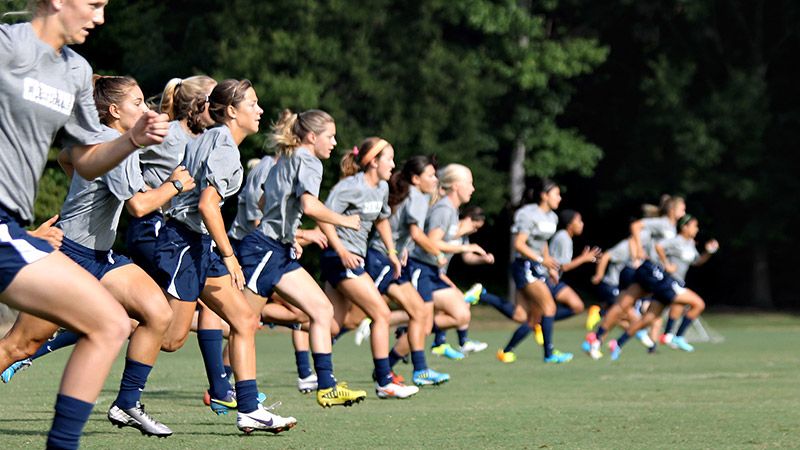My team of 13-year-old girls recently had a Christmas Party. First, let me tell you that I am very lucky. My team of middle-schoolers get along very well. They laugh a lot and really enjoy being around each other. And at least for a few hours at a time, they dispel the old saying, “There’s nothing meaner than a middle school girl.”
So it was interesting to watch them play that Dirty Santa game. You know the game — everyone brings a gift and they draw numbers. The first one chooses a gift, and No. 2 can either take a different gift or steal the one from the first girl. The game goes on like that until every gift has been opened.
The game went through 11 girls before someone stole a gift from one of their teammates. No one wanted to be mean. After the first “steal,” however, it was a free-for-all.
Watching the action, I started thinking about a book I co-authored with University of North Carolina women’s soccer coach Anson Dorrance in 1996 called Training Soccer Champions. A lot of the book is about how women athletes compete.
“Women have the superior understanding that their relationships are more important than the game itself,” Dorrance said in the book.
 Over Dorrance’s 40 years coaching the Tar Heels – during which he has compiled an 826-70-38 record and won 22 national championships – he has developed a unique understanding of female athletes.
Over Dorrance’s 40 years coaching the Tar Heels – during which he has compiled an 826-70-38 record and won 22 national championships – he has developed a unique understanding of female athletes.
His “Competitive Cauldron” which is designed to either force his players to compete, or at least give them permission to compete in training every day, has become a popular method in fostering competition within teams. The cauldron is based on keeping score in everything they do — every drill, every small-sided game, every day. Playing time is tied to their scores.
By collecting objective data, Dorrance, his staff and the players have concrete information on who is out-performing or under-performing relative to their teammates.
It works. Players learn they can give everything they have to win an otherwise meaningless 4v4 game and still be friends with the girls they just crushed. But since the book came out, other uses have emerged.
In 2006, Germany was the host of the World Cup and therefore did not have to go through the grueling qualifying stages. Jurgen Klinsmann, Germany’s coach at the time, feared his team would lose its competitive edge by not playing meaningful games like the rest of the world. He called Dorrance and implemented the Competitive Cauldron.
A few years later, Pete Carroll, coach of the Seattle Seahawks, read Training Soccer Champions. The result was “Competitive Wednesdays,” where once a week everything the Seahawks do in practice has a score attached.
If you have been able to follow my thought process through my 14U girls to UNC women’s soccer to Germany and the Seahawks, here’s the point: A lot has changed in sports in the 22 years since Training Soccer Champions was published.
Dorrance started out by recording scores on legal pads. But thanks to progress in technology, there has been a revolution in the way data is collected and used. Every major professional and college program has a sports science staff dedicated to improving the performance of each athlete.
We have reached the point now where for technology to be useful, it has to be able to keep up with ideas. An app or program must be able to do whatever the basic tech-illiterate coach with a brainstorm wants to track. If it can’t, it will die.
DRIVN was built with that understanding.
“Everyone has their own way of doing things, so we built the platform so it was able to meet the needs,” says DRIVN Vice President of Business Development Mike Gosselin. “If we built an app, it would do these five things. If you want it to do a sixth thing, we would need to build a new app. DRIVN wasn’t built to solve X and Y. It was built to solve A through Z.
“The platform that DRIVN sits on top of is highly configurable, and that’s the way it was built. It can change and develop when you change and develop.”
If there is one thing I’ve learned about sports in the past 22 years, it’s that you can count on it changing and developing.